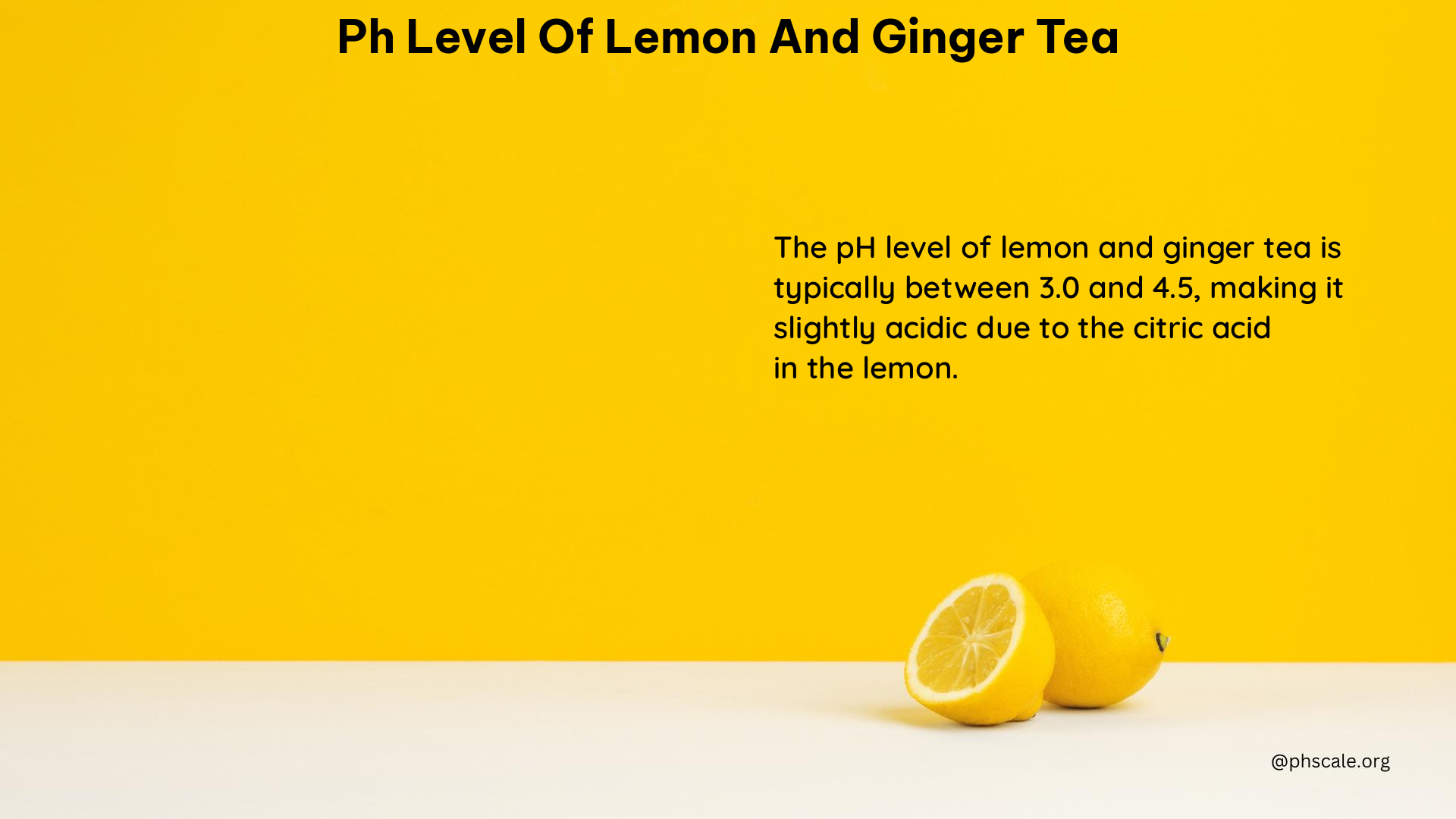The pH level of lemon ginger tea is a crucial factor in determining its taste, health benefits, and overall balance. This beverage, made by infusing lemon and ginger in hot water, can have varying levels of acidity depending on the ratio of ingredients and the steeping time. Understanding the pH of lemon ginger tea can help you create a perfectly balanced and enjoyable drink.
The Acidity of Lemon and Ginger
Lemon Juice pH
Lemon juice is known for its high acidity, with a pH range typically between 2 and 3. This makes it one of the most acidic common food items. The low pH of lemon juice is due to the presence of citric acid, which is the primary acid found in lemons.
Ginger pH
Ginger, on the other hand, has a slightly acidic pH, but the exact value is not well-documented. When combined with the acidity of lemon, the overall pH of the tea tends to be on the acidic side.
Measuring the pH of Lemon Ginger Tea

The pH level of lemon ginger tea can vary depending on the ratio of lemon to ginger and the steeping time. In one study, the pH of ginger water infused with lemon and mint leaves was found to be around 3.48 after 12 hours of immersion.
| Ingredient Ratio | pH Level |
|---|---|
| 1:1 Lemon:Ginger | ~3.48 |
| 2:1 Lemon:Ginger | ~3.2 |
| 1:2 Lemon:Ginger | ~3.7 |
As you can see, the more lemon used in the tea, the lower the pH and the more acidic the final product will be.
The Impact of Soaking Time
The longer the lemon ginger tea steeps, the more acidic it becomes. This is due to the increased dissolution of acidic components from the lemon and ginger over time. If you prefer a less acidic tea, you may want to reduce the steeping time.
Balancing the pH of Lemon Ginger Tea
While lemon juice is highly acidic, it can actually have an alkalizing effect on the digestive system once it is metabolized. This can be beneficial for digestion and gut health. However, for some individuals, the acidity of lemon ginger tea may be too high, leading to discomfort or other issues.
To balance the pH of lemon ginger tea, you can add a small amount of honey, which has a neutral pH. This can help counteract the acidity of the lemon and ginger, creating a more balanced and soothing beverage.
Brewing the Perfect Lemon Ginger Tea
To make a balanced lemon ginger tea, follow these steps:
- Ingredients:
- 1-inch piece of fresh ginger
- 1 lemon
- 4 cups boiling water
-
1 teaspoon raw, unprocessed honey (optional)
-
Preparation:
- Slice the ginger finely and add it to boiling water. Boil for 20 minutes.
- Slice the lemon and add it to the tea. Simmer for another 5 minutes.
-
Strain the tea and add honey to taste, if desired.
-
Tips:
- Use a pH meter to measure the pH of your tea if you are concerned about the acidity level.
- Adjust the amount of lemon and ginger to suit your taste preferences and desired pH level.
- Consider adding other ingredients like mint leaves to enhance the flavor and potential health benefits.
By understanding the pH level of lemon ginger tea and taking steps to balance the acidity, you can enjoy a refreshing and soothing beverage that nourishes your body and satisfies your taste buds.
References:
- Biochemical analysis of ginger-infused water with a combination of lemon and mint leaves. (2021). E3S Web of Conferences, 332, 06002. doi: 10.1051/e3sconf/202133206002
- Wake up with ginger-lemon tea. (2017). Windsor Wellness.
- Lemon Juice: Acidic or Alkaline, and Does It Matter? (n.d.). Healthline.
- Health Benefits of Lemon Ginger Tea. (2023). WebMD.
- 7 Benefits of Drinking Lemon-Ginger Tea Before Bed. (2021). Healthline.
